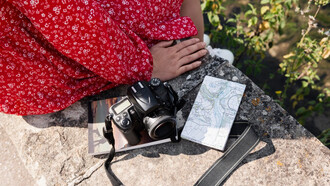India is well known for many of its attractions and culture, and being such a vast country, it would take months to visit; however, something that all of India has in common in March, is the festival of colours that introduces spring and the end of the grey season.
Originally, it was a Hindu religious festival, but is now very popular also amongst non-Hindu communities and its celebration is gradually expanding outside the country. It is celebrated on the first full moon around the Spring equinox, and represents not only the arrival of spring and the end of winter, but it is also an opportunity to manifest love, visit family and friends.
The celebrations this year, between the 17th-18th of March, started with the Holika bonfires on the night before Holi, where people sing and dance around large cow manure fuelled bonfires. Cows are sacred in India and live freely absolutely everywhere; you can even find them in the middle of the highway, so they are an excellent source of fuel.
The next morning, people are in the streets hugging strangers and exchanging happy Holi wishes, throwing all different tints of coloured powder at each other. It is a truly delightful view: different shades of colour mix upon the flesh and clothing, water spreads the colour, leaving space to yet another layer of colour to come. People dance and laugh in the streets and on this special day, the caste system is more tolerant, as some people are allowed things that usually they couldn’t do.
Our experience through the streets of the village we picked to celebrate Holi (a village south of Delhi) was amazing. We though we would be photographing a party, until we realized that we “where” the party! Everyone had great fun throwing colours in our faces, hugging us, spraying us with coloured water and having their pictures taken by us and with us. It was a truly “colourful” heart warming experience.
There is only one dark side that falls over this delightful festival and that is the material used to make the colours. It would be perfect if the pigments contained natural dyes, but unfortunately, many of these powders are made with chemicals such as copper for green, lead for black and mercury for red. It is advisable to try and avoid contact with eyes and mouth, although upon entering the Holi world, it is impossible not to get covered in a large variety of different shades. We wore glasses and a mask, as well as a wig and a cloak, but this still earned us a rainbow complex.
It took me quite a few days and many showers later to see the green and magenta finally fade away from my chest and tummy and during these days, it is not rare to spot a pink cow or a green dog strolling through the alleyways of the villages.















